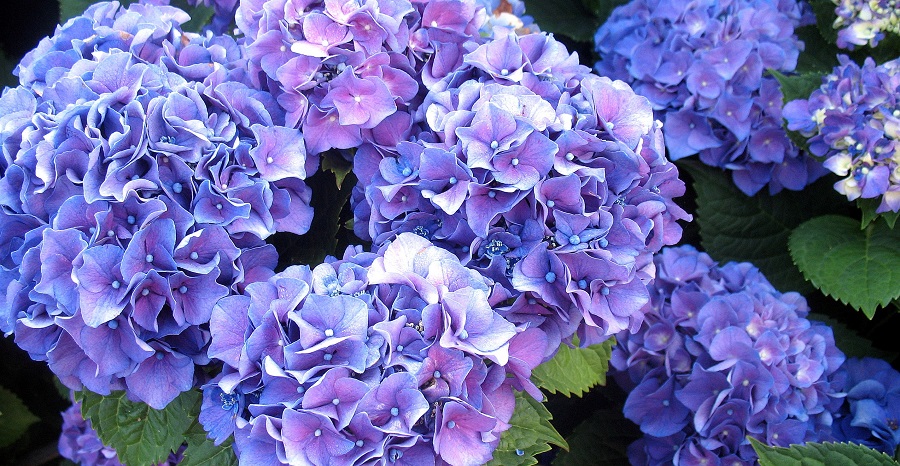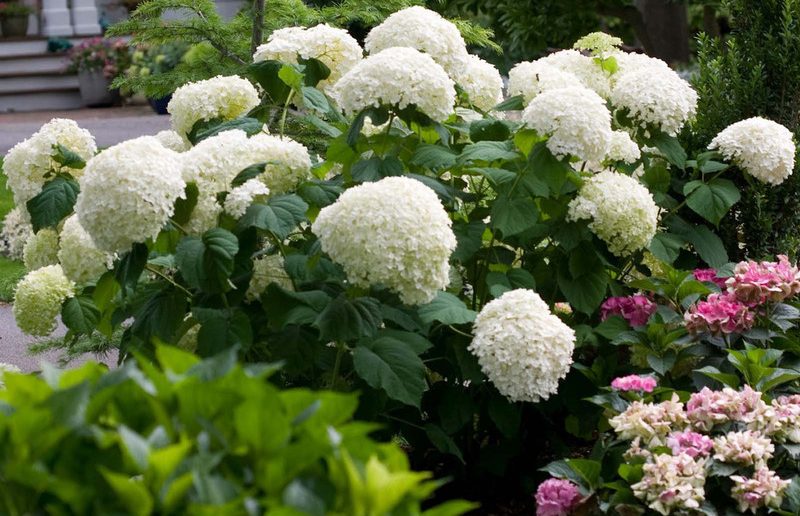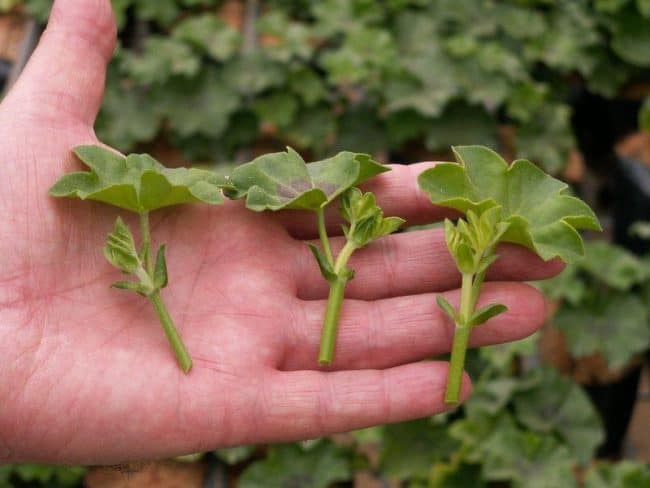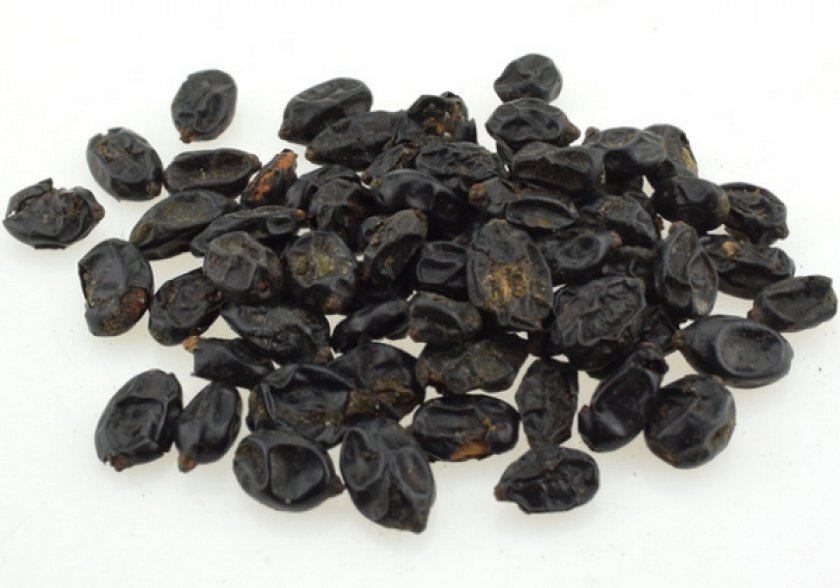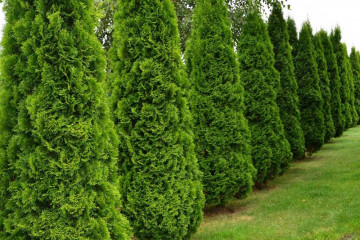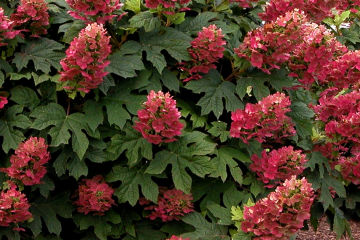How to propagate hydrangea paniculata, tree-like, large-leaved
Content:
- The best time to breed different types of hydrangea
- What are the ways to propagate garden and room hydrangea
- How to grow a hydrangea from a cutting
- Propagation of hydrangea by dividing the bush
- Growing hydrangeas from seeds
- The technology of propagation of hydrangeas by layering in spring
- How to propagate hydrangea by offspring
- Is it possible to root a hydrangea from a bouquet and get a young bush
Hydrangea is a beautiful garden crop grown by many gardeners. This plant can serve as a real decoration of the garden area. For a culture to develop normally, it needs proper care. Many novice gardeners are interested in how to propagate a hydrangea. Professionals say there are many ways to do this.
The best time to breed different types of hydrangea
The breeding period of hydrangea paniculata depends on the method. The most popular way to cultivate a horticultural culture is cuttings.
It is important to consider that hydrangea has many varieties. There is a woody, paniculate, large-leaved culture. All species can be propagated by any means. In this case, certain features must be taken into account.
Treelike varieties suffer the least from low temperatures. Therefore, they can not be covered for the winter. Bushes should be planted in the shade or partial shade. Such varieties of hydrangeas are propagated by cuttings or layering. The seed method will take a very long time.
Paniculate varieties grow well, so you need to systematically prune them. The resulting cuttings can be used for propagation.
The large-leaved hydrangea is considered the most beautiful. At the same time, the plant is very moody. It can be propagated in different ways - by cuttings, seeds, dividing or layering.
Spring
In the spring, cuttings are carried out before the juices begin to move. The optimal time to complete the procedure is March. For rooting, shoots of last year's bushes are used, which had time to woody.
Summer
It is best to propagate hydrangea by cuttings in summer. In paniculate, large-leaved or tree-like hydrangea, buds appear by this time.
How to propagate hydrangea by cuttings in summer? For this purpose, use green cuttings with leaves and at least one bud.
Is it worth propagating in the fall
Autumn is suitable for cutting woody twigs. They are often pruned and sent to compost. Cultivation should be done in mid-September.
It is important that the stalk includes 3 knots. In this case, all the leaves must be cut off.
What are the ways to propagate garden and room hydrangea
To grow a new plant in the country, you need to choose the right method of reproduction. At home, the following methods are usually used:
- green cuttings;
- offspring;
- layering;
- seeds;
- dividing the bush.
How to grow a hydrangea from a cutting
Many people are interested in how to properly cut a hydrangea. To carry out this procedure, you need to select healthy shoots and root them.
How to choose and cut a stalk
It is best to carry out cuttings of panicle hydrangea in summer, when buds appear on the mother plant. For cutting, it is worth choosing young green shoots that have a flexible structure and grow in a lighted area. They should be at the bottom of the main part of the bush. Lateral annual shoots are also suitable for grafting.
When preparing cuttings, a sufficient amount of moisture must be retained in them in order to avoid irreversible changes. Therefore, experienced gardeners recommend adhering to these recommendations:
- Shoots to be rooted should be cut on a sunny morning or cloudy weather. After which they must be immediately divided into cuttings.
- Remove the upper fragments with buds.
- Divide the rest of the shoot into fragments with 2-3 pairs of leaves.
- Remove the lower leaves, and shorten the remaining ones by half or by a third.
- Soak the cuttings in a growth promoter. They must stand in it for 2 hours.
- Before planting, disinfect the upper part with brilliant green or garden varnish. You can also use charcoal.
How to get roots in water
At the initial stage of root formation, gardeners often soak the cuttings in water. The liquid should be soft with a minimum content of calcium salts. You can add a little growth stimulant to it. The length of the cuttings should be at least 10 cm. Moreover, they should contain 2-3 internodes.
When cutting hydrangeas, the foliage from the cuttings must be removed to stimulate the process of root formation. To root the plant, you need to use a transparent container, since the light promotes the formation of the root system.
Propagation of hydrangea by cuttings is simple and affordable, but it has certain disadvantages. With a prolonged stay of cuttings in water, decay processes begin. Therefore, the water should be changed systematically, avoiding the appearance of a musty smell. To protect the cuttings from rotting, it is worth placing activated carbon in the water.
How to root a cutting in the ground
To plant plants in the garden, you will need a light soil. To make it, you need to mix peat or humus with washed sand. These components are combined in a 2: 1 ratio.
In the resulting substrate, cuttings should be planted obliquely, deepening them by 2-3 cm.The plants should be planted at intervals of 5-7 cm.Then cover the substrate with a layer of sand 2 cm thick.
Propagation of hydrangea by dividing the bush
This method is reliable and simple. However, it can only be used for shrub varieties. It is impossible to plant trees or vines in this way.
Seat selection
How to propagate hydrangea in this way? The division of the bush must be done in the spring. Thanks to this, by the fall, the fragments will be able to fully take root and adapt to winter. First you need to choose a landing site. The plant needs a well-lit area.
Then you need to dig out recesses for planting 50 cm in size.Organics and minerals should be added to each recess. For this, wood ash, peat, compost are suitable.
Step-by-step division process
To breed a culture, you need to do the following:
- Before digging up the bush, the soil must be thoroughly watered. This will make it easier to untangle the roots.
- Wash off the soil from the root system and divide into fragments.
- Plant the received fragments in the prepared places.
Growing hydrangeas from seeds
Many people are interested in how the garden hydrangea reproduces by the seed method. This method is considered to be quite time consuming.It should be borne in mind that the bush will not be able to bloom right away. This will take a long time.
Seed selection
First of all, you need to choose quality seeds. They must meet the following requirements:
- Nice appearance. The seeds must be whole and free from external damage.
- Absence of traces of diseases. The grains should not be sluggish or frozen.
- Varietal characteristics. It is imperative to ask the seller for this.
Plant propagation by seeds is considered an effective method. To achieve good results in growing a crop, it is worth following certain rules.
Sowing process
After purchasing the seeds, you need to start planting. They are performed immediately after the acquisition of seed. The grains should be germinated first. To do this, moisten cotton wool or cheesecloth with water and put the seeds on top. When they swell, planting work can be carried out.
When planting hydrangeas, you need to pay attention to the quality and composition of the soil. It should include sand, peat, turf, forest land and humus. After preparing the substrate, you need to take a small box, pour soil into it and lay out the seeds. Sprinkle a little earth on top.
Seedling and young bushes care
In order for a plant to grow and develop normally, it needs to be provided with full and high-quality care. When growing seedlings, the following features must be taken into account:
- Apply fertilizers in a timely manner. The best option would be special nutritional formulations that are sold in stores. It should be borne in mind that their use affects the color of the flower. If sulfur, aluminum salts or sulfate are added to the soil, the flowers will turn blue.
- Water the plant correctly. Excess moisture in the culture is contraindicated. In this case, the soil should not dry out. Hydrangea needs optimal moisture. Watering should not be intense. It is important to systematically moisten the soil.
- Take proper care of the soil. It is important to regularly clear the soil of weeds.
- Treat bushes from parasites. You should definitely pay attention to this point.
The technology of propagation of hydrangeas by layering in spring
Hydrangea can be propagated by layering. The procedure is recommended to be carried out in early spring - before the appearance of the buds. First, the soil around the bush should be dug up, and then leveled well. Then make grooves with a depth of 1.5-2 cm and lay in them 1 shoot from the bottom of the bush.
To prevent the branches from straightening, they must be attached to the surface of the earth. To do this, you can use special slingshots. Sprinkle earth on top of the plant.
To make the roots appear faster, you can use a simple trick. To do this, on the layers in front of the lower first kidney, you need to make a constriction of thin wire. She needs to make 2-3 turns. As it thickens, the constriction will begin to press on the bark, which will lead to the formation of roots.
By the end of summer, several shoots should have formed on each layer. When these elements grow to 15-20 cm, they need to be hilled. After that, every 7-10 days, the procedure should be repeated. This must be done until the height of the hill becomes 20-25 cm.
In October, the layers need to be dug out and the fragments formed. Their height should reach 50 cm by this time.
How to propagate hydrangea by offspring
Hydrangea reproduces well with shoots. This method must be applied very carefully and carefully.To do this, in the fall, it is necessary to remove the top layer of soil and carefully separate the coppice shoot.
The separated parts must be planted in the garden and grown. Depending on the condition of the seedling, this should be done for 1-2 years.
Is it possible to root a hydrangea from a bouquet and get a young bush
Some people try to practice rooting hydrangeas from a bouquet.
However, experienced gardeners believe that this is very problematic. For the full reproduction of the bush in this way, the planting material must be harvested correctly, following a number of recommendations. But even with the right approach, the likelihood of success is minimal.
Hydrangea is a popular ornamental crop with excellent flowering. Therefore, the plant is often used in landscape design. To succeed in growing a crop, you need to properly care for it. For self-propagation of a plant, you can use different methods. Most often, gardeners use cuttings. However, it is also permissible to use the division of the bush or propagation by layering, offspring, seeds.
